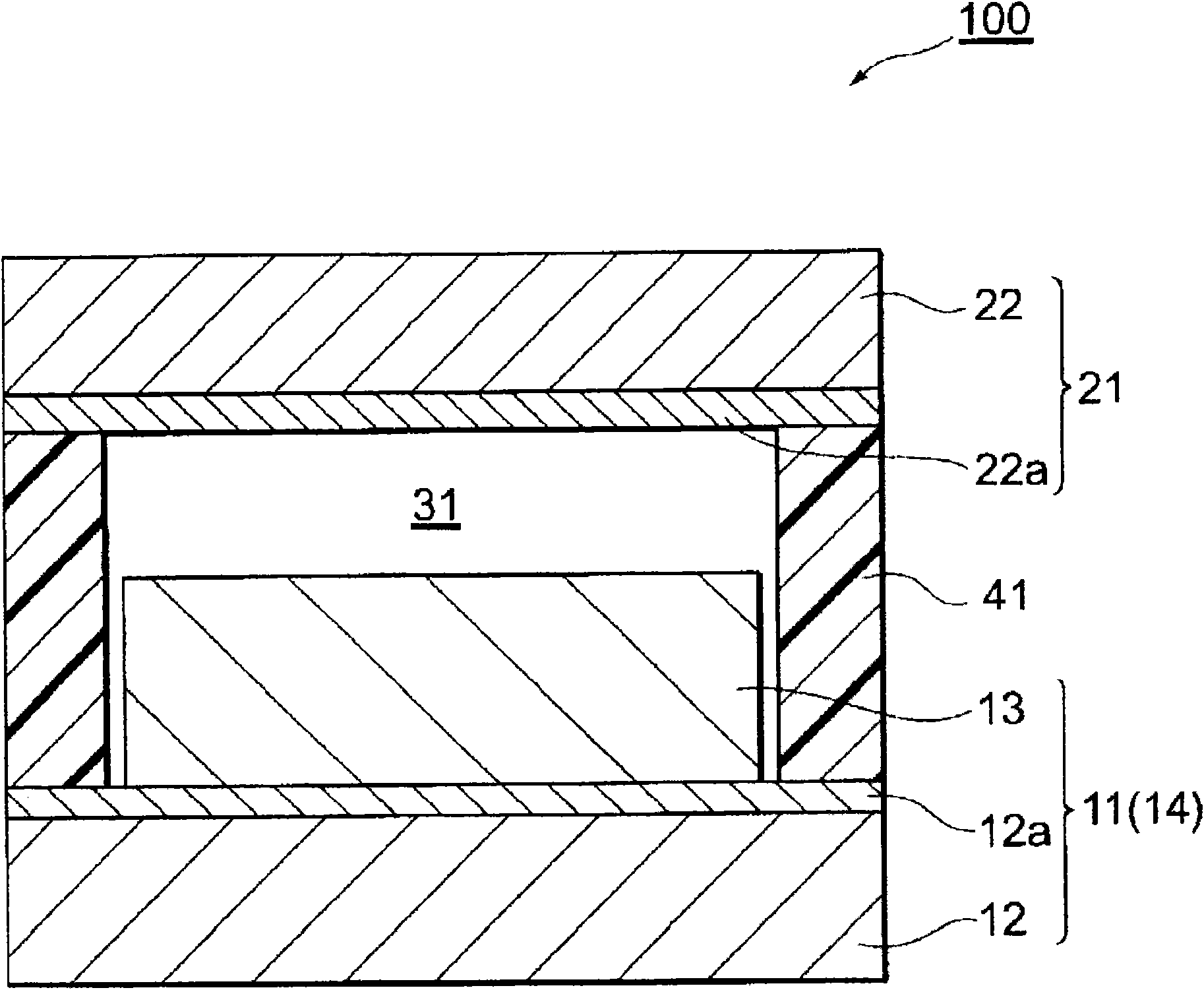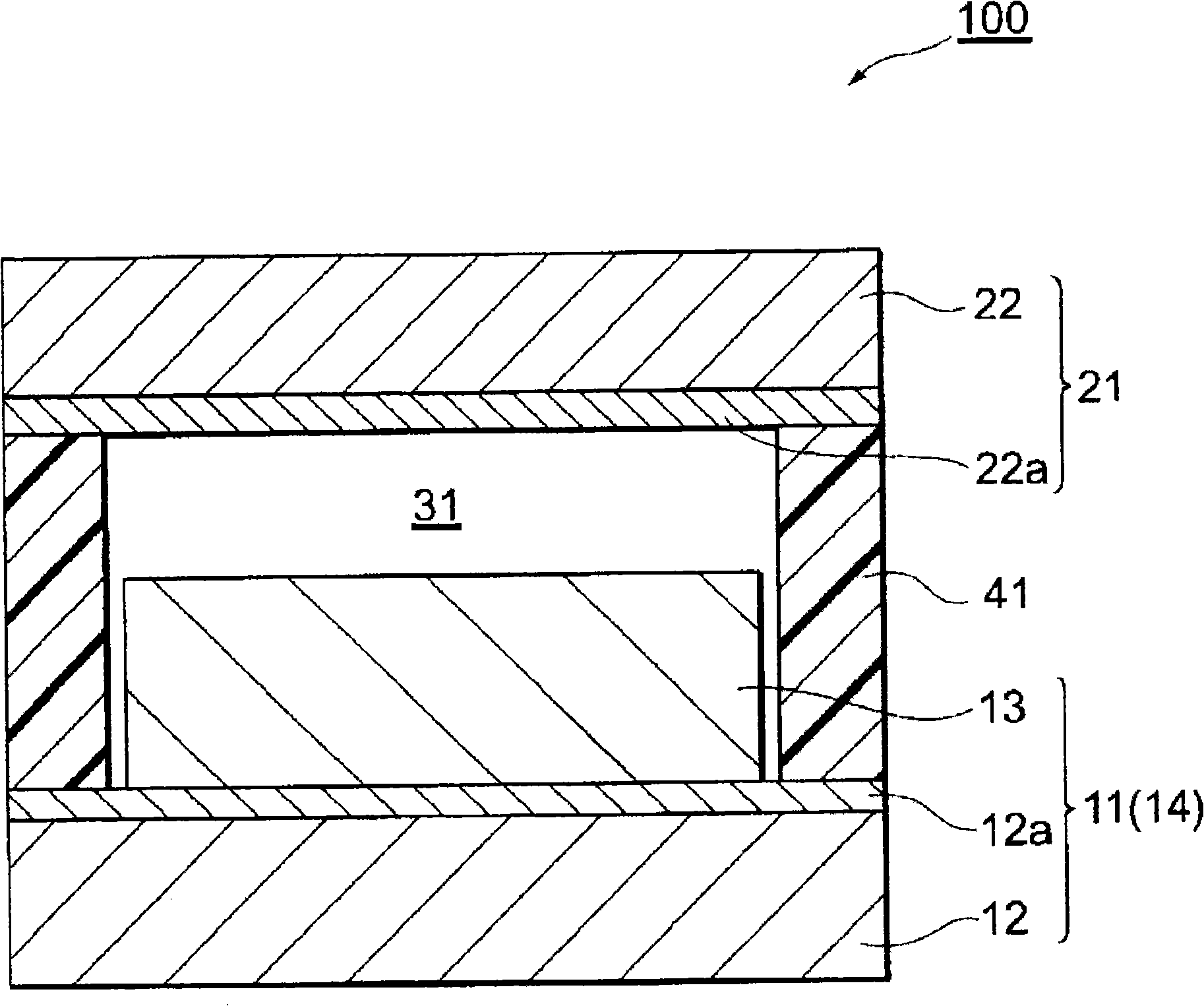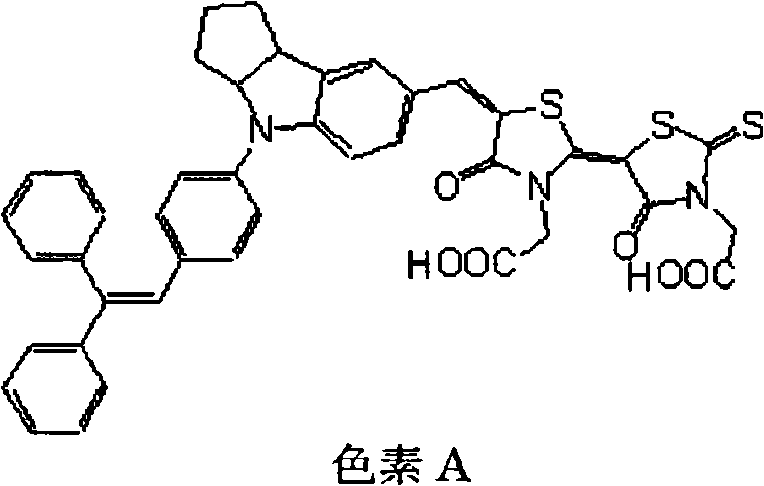Dye-sensitized solar cell and organic solvent-free electrolyte for dye-sensitized solar cell
A technology for solar cells and pigment sensitization, applied in the fields of nanotechnology, electrolytic capacitors, circuits, etc. for information processing, can solve the problems such as the inability to quasi-solidify the electrolyte, the inability to obtain photoelectric conversion performance, and the insufficient electrolyte performance. Achieve the effects of excellent photoelectric conversion performance, cost reduction, and improved safety and reliability
- Summary
- Abstract
- Description
- Claims
- Application Information
AI Technical Summary
Problems solved by technology
Method used
Image
Examples
Embodiment 1
[0054] First, a dye-carrying electrode was fabricated in the following procedure.
[0055] SnO ready to be doped with fluorine 2 A transparent glass substrate (TCO: manufactured by AGC Fabritech Co., Ltd., size: length 25 mm x width 25 mm x thickness 1.1 mm) which is a transparent conductive film. Next, 750 ml of a 0.1 M potassium chloride aqueous solution was prepared as an electrolytic solution. In this electrolytic solution, the transparent conductive film of the transparent glass substrate and the platinum plate of the counter electrode were arranged to face each other, and silver / silver chloride was used as the reference electrode. , while carrying out oxygen bubbling, a potentiostatic electrolysis (preliminary electrolysis) at a potential of -0.1 V (vs. Ag / AgCl) was carried out. The electrolysis conditions at this time were a temperature of 70°C and a charge amount of -2.35°C. This preliminary electrolysis realizes modification of the electrolyte solution and surface m...
Embodiment 2~5
[0068] The organic solvent-free electrolytes (quasi-solid electrolytes) of Examples 2 to 5 were prepared in the same manner as in Example 1, except that the inorganic iodine compound was changed as described in Table 1. Then, the dye-sensitized solar cells of Examples 2 to 5 were prepared in the same manner as in Example 1, except that the organic solvent-free electrolytes of Examples 2 to 5 were used, respectively. The measurement results are shown in Table 2.
Embodiment 6~7
[0070] Examples 6 and 7 were produced in the same manner as in Example 1, except that the counter electrode used was a counter electrode in which a Pt layer with a thickness of 100 nm was formed on the transparent conductive film of the counter electrode used in Example 1 by sputtering. dye-sensitized battery. The measurement results are shown in Table 2.
PUM
 Login to View More
Login to View More Abstract
Description
Claims
Application Information
 Login to View More
Login to View More - R&D
- Intellectual Property
- Life Sciences
- Materials
- Tech Scout
- Unparalleled Data Quality
- Higher Quality Content
- 60% Fewer Hallucinations
Browse by: Latest US Patents, China's latest patents, Technical Efficacy Thesaurus, Application Domain, Technology Topic, Popular Technical Reports.
© 2025 PatSnap. All rights reserved.Legal|Privacy policy|Modern Slavery Act Transparency Statement|Sitemap|About US| Contact US: help@patsnap.com



